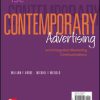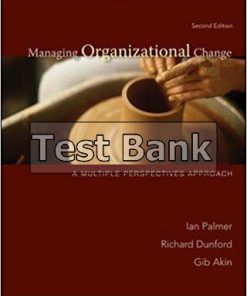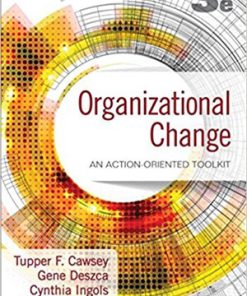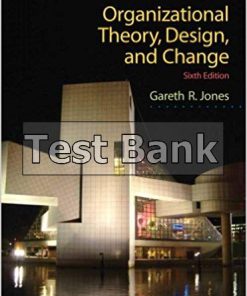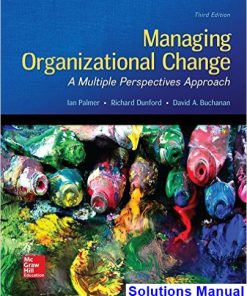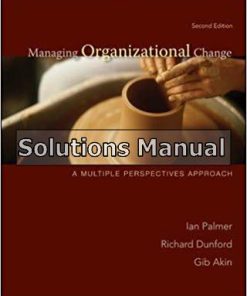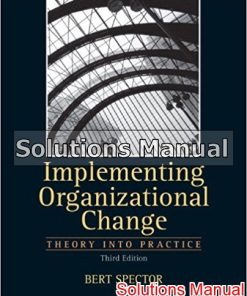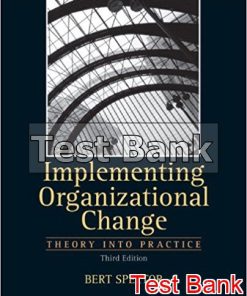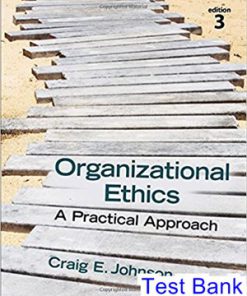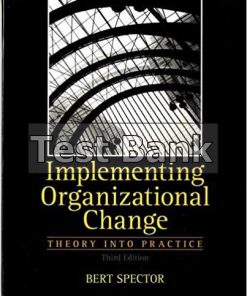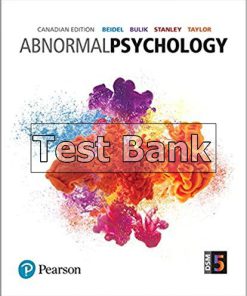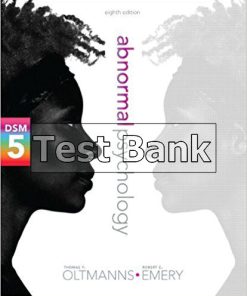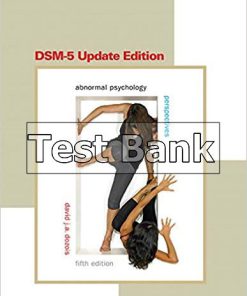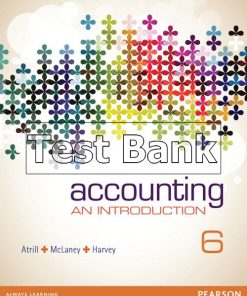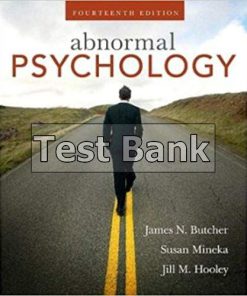Managing Organizational Change A Multiple Perspectives Approach 3rd Edition Palmer Test Bank
$50.00 Original price was: $50.00.$26.50Current price is: $26.50.
Managing Organizational Change A Multiple Perspectives Approach 3rd Edition Palmer Test Bank.
This is completed downloadable of Managing Organizational Change A Multiple Perspectives Approach 3rd Edition Palmer Test Bank
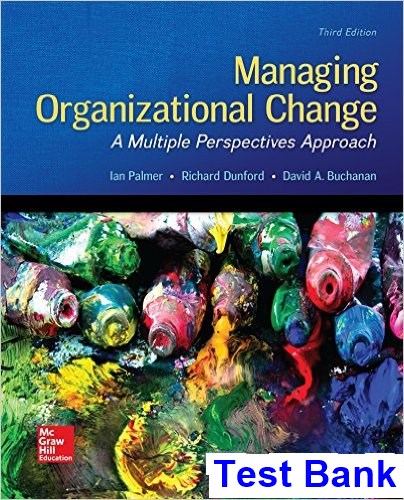
Product Details:
- ISBN-10 : 9780073530536
- ISBN-13 : 978-0073530536
- Author: Ian Palmer (Author), Richard Dunford (Author), David Buchanan (Author)
Managing Organizational Change: A Multiple Perspectives Approach, 3e, by Palmer, Dunford, and Buchanan, offers managers a multiple perspectives approach to managing change, which recognizes the variety of ways to facilitate change and reinforces the need for a tailored and creative approach to fit different contexts.
The third edition offers timely updates to previous content, while introducing new and emerging trends, developments, themes, debates, and practices.
Table of Content:
- Part 1 Groundwork: Understanding and Diagnosing Change
- Chapter 1 Managing Change: Stories and Paradoxes
- Learning objectives
- Stories About Change: What Can We Learn?
- The Story of Beth Israel Deaconess Medical Center
- The Story of Sears Holdings
- The Story of J. C. Penney
- Tension and Paradox: The State of the Art
- Assessing Depth of Change
- What’s Coming Up: A Road Map
- Change Diagnostic: The Beth Israel Story
- Change Diagnostic: The Sears Holdings Story
- Change Diagnostic: The J. C. Penney Story
- Exercise 1.1: Writing Your Own Story of Change
- Additional Reading
- Roundup
- References
- Chapter 2 Images of Change Management
- Learning objectives
- What’s in a Name: Change Agents, Managers, or Leaders?
- Images, Mental Models, Frames, Perspectives
- The Six-Images Framework
- Six Images of Change Management
- Using the Six-Images Framework
- Self-Assessment: What Is Your Image of Managing Change?
- Self-Assessment: Scoring
- Exercise 2.1: Assessing Change Managers’ Images
- Exercise 2.2: The Turnaround Story at Leonard Cheshire
- Additional Reading
- Roundup
- References
- Chapter 3 Why Change? Contemporary Pressures and Drivers
- Learning objectives
- Environmental Pressures for Change
- Why Do Organizations Not Change in Response to Environmental Pressures?
- Why Do Organizations Not Change after Crises?
- Internal Organizational Change Drivers
- Exercise 3.1: Top Team Role Play
- Exercise 3.2: Case Analysis: The Sunderland City Story
- Exercise 3.3: The Reputation Trap: Can You Escape?
- Additional Reading
- Roundup
- References
- Chapter 4 What to Change? A Diagnostic Approach
- Learning objectives
- Organizational Models
- Organization Strategy and Change
- Diagnosing Readiness for Change
- Built-to-Change
- Exercise 4.1: The Capital One Financial Story
- Exercise 4.2: Scenario Planning
- Exercise 4.3: Readiness for Change Analysis
- Additional Reading
- Roundup
- References
- Part 2 Implementation: The Substance and Process of Change
- Chapter 5 What Changes—and What Doesn’t?
- Learning objectives
- What Changes?
- Innovation
- Organizational Culture
- Technology
- Exercise 5.1: The Nampak Story
- Exercise 5.2: Organizational Culture Assessment
- Exercise 5.3: How Will the Digital Revolution Affect Your Organization?
- Additional Reading
- Roundup
- References
- Chapter 6 Vision and the Direction of Change
- Learning objectives
- Vision: Fundamental or Fad?
- The Characteristics of Effective Visions
- How Context Affects Vision
- How Visions Are Developed
- Why Visions Fail
- Linking Vision to Change: Three Debates
- Exercise 6.1: Interviewing Change Recipients
- Exercise 6.2: Analyze Your Own Organization’s Vision
- Exercise 6.3: The Role of Vision at Mentor Graphics
- Additional Reading
- Roundup
- References
- Chapter 7 Change Communication Strategies
- Learning objectives
- The Change Communication Process
- Gender, Power, and Emotion
- Language Matters: The Power of Conversation
- Change Communication Strategies
- Contingency Approaches to Change Communication
- Communication Channels and the Role of Social Media
- Exercise 7.1: Listen to Who’s Talking
- Exercise 7.2: How Defensive Are You?
- Exercise 7.3: Social Media at the Museum
- Additional Reading
- Roundup
- References
- Chapter 8 Resistance to Change
- Learning objectives
- WIIFM, WAMI, and the Dimensions of Resistance
- Benefits
- Causes
- Symptoms
- Managers as Resisters
- Managing Resistance
- Exercise 8.1: Diagnosing and Acting
- Exercise 8.2: Jack’s Dilemma
- Exercise 8.3: Moneyball
- Additional Reading
- Roundup
- References
- Chapter 9 Organization Development and Sense-Making Approaches
- Learning objectives
- Alternative Approaches to Managing Change
- Organization Development (OD)
- Appreciative Inquiry (AI)
- Positive Organizational Scholarship (POS)
- Dialogic Organizational Development
- Sense-Making
- Exercise 9.1: Reports from the Front Line
- Exercise 9.2: Designing a Large-Scale Change Intervention
- Exercise 9.3: Making Sense of Sense-Making
- Exercise 9.4: Interpreting the Interpreter: Change at Target
- Exercise 9.5: Change at DuPont
- Additional Reading
- Roundup
- References
- Chapter 10 Change Management, Processual, and Contingency Approaches
- Learning objectives
- Alternative Approaches to Managing Change
- Why Change Fails
- Change by Checklist
- Stage Models of Change Management
- Process Perspectives on Change
- Contingency Approaches to Change Management
- Exercise 10.1: Develop Your Own Change Model
- Exercise 10.2: The British Airways Swipe Card Debacle
- Exercise 10.3: The Italian Job
- Additional Reading
- Roundup
- References
- Part 3 Running Threads: Sustainability, and the Effective Change Manager
- Chapter 11 Sustaining Change versus Initiative Decay
- Learning objectives
- Initiative Decay and Improvement Evaporation
- Praiseworthy and Blameworthy Failures
- Actions to Sustain Change
- Words of Warning
- Exercise 11.1: A Balanced Set of Measures
- Exercise 11.2: Treating Initiative Decay
- Exercise 11.3: The Challenger and Columbia Shuttle Disasters
- Additional Reading
- Roundup
- References
- Chapter 12 The Effective Change Manager: What Does It Take?
- Learning objectives
- Change Managers: Who Are They?
- Change Managers: What Kind of Role Is This?
- Change Management Competencies
- Political Skill and the Change Manager
- Developing Change Management Expertise
- Exercise 12.1: Networking—How Good Are You?
- Exercise 12.2: How Resilient Are You?
- Exercise 12.3: How Political Is Your Organization?
- Additional Reading
- Roundup
- References
- Name Index
- Subject Index
People Also Search:
managing organizational change a multiple perspectives approach
managing organizational change a multiple perspectives approach 3rd edition
managing organizational change a multiple perspectives approach testbank download pdf
managing organizational change a multiple perspectives approach download scribd
Instant download after Payment is complete
You may also like…
Management
Managing Organizational Change A Multiple Perspectives Approach 2nd Edition Palmer Test Bank
Management
Managing Organizational Change A Multiple Perspectives Approach 3rd Edition Palmer Solutions Manual
Solutions Manual
Managing Organizational Change A Multiple Perspectives Approach 2nd Edition Palmer Solutions Manual
Solutions Manual
Implementing Organizational Change Theory Into Practice 3rd Edition Spector Test Bank



